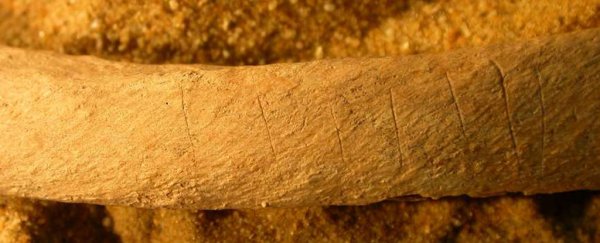Broken, mutilated, and burnt bones in an English burial pit dating back to medieval times reveal how superstitious villagers sought to prevent corpses rising from the dead, according to a new study.
The notion of the revenant – a ghost or corpse that returns to haunt the living – was common in medieval folklore, but the desecrated, mixed-up remains found in the village of Wharram Percy in North Yorkshire are thought to be the first evidence in England of ancient efforts to make sure the dead stay dead.
"If we are right, then this is the first good archaeological evidence we have for this practice," says human skeletal biologist Simon Mays from history preservation body Historic England.
"It shows us a dark side of medieval beliefs and provides a graphic reminder of how different the medieval view of the world was from our own."
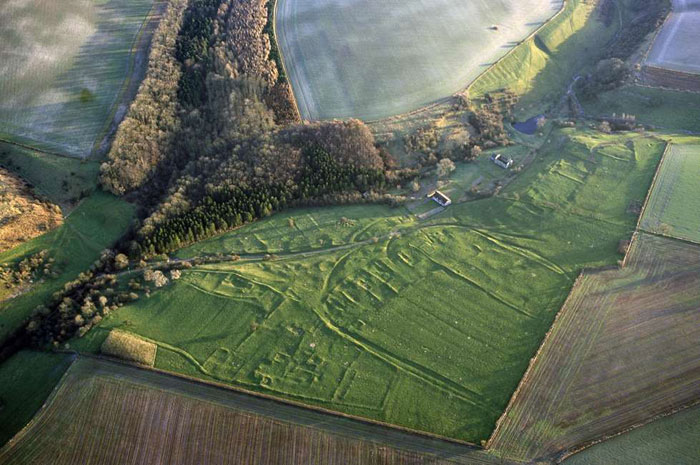 Aerial view of Wharram Percy Mediaeval Village. Credit: Historic England
Aerial view of Wharram Percy Mediaeval Village. Credit: Historic England
Mays' team studied 137 desecrated bones representing the remains of at least 10 individuals: seven adults (five males and two women), plus three young children.
The skeletons date to between the 11th and 14th centuries – most likely representing multiple burial events – and were originally discovered during an excavation in 1963, but have not been examined closely until now.
The remains were buried in three overlapping pits near where a house was later built – not near the village's church or graveyard.
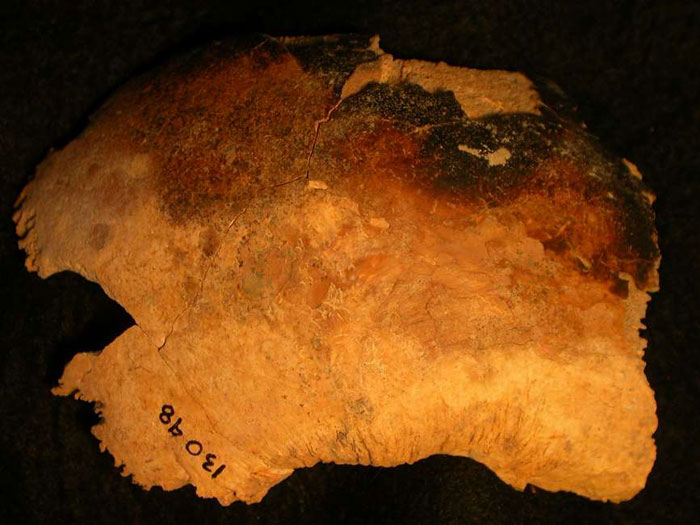 Right parietal from an adult cranium showing burn marks. Credit: Historic England
Right parietal from an adult cranium showing burn marks. Credit: Historic England
Among the bones, the team found macabre evidence of decapitation, knife marks (confined to the upper body), burning of body parts, and deliberate breaking of bones after death.
Given the nature of the mutilation and the unconventional burial location – in which bones were mixed together – the researchers wondered if the skeletons were outsiders who might have intentionally been buried away from the townspeople.
But traces of dental enamel indicated that, whoever these people were, they were in fact locals.
"Strontium isotopes in teeth reflect the geology on which an individual was living as their teeth formed in childhood," says one of the team, archaeologist Alistair Pike from the University of Southampton in the UK.
"A match between the isotopes in the teeth and the geology around Wharram Percy suggests they grew up in an area close to where they were buried, possibly in the village."
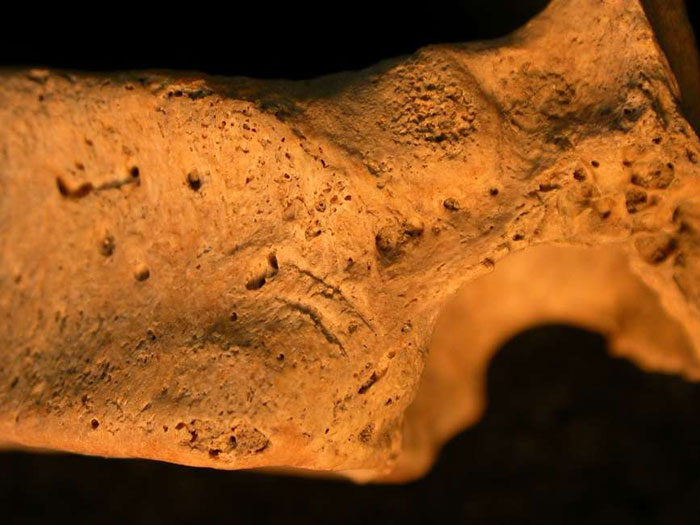 A mid-lower thoracic vertebra, showing two almost parallel knife cuts. Credit: Historic England
A mid-lower thoracic vertebra, showing two almost parallel knife cuts. Credit: Historic England
Another possibility is that the markings might have reflected cannibalism in the village during periods of famine – which were common in medieval England, and supported by some evidence of bone breaking that might have resulted from cooking processes.
"The case for cannibalism is supported by the fracturing of long-bones, which would be consistent with marrow extraction," the authors explain in their paper, "although, alternatively, this could represent part of a spectrum of actions intended to combat a revenant corpse.
The team also noticed that knife marks on the bones were concentrated around the head and neck – not muscle attachments and large joints, where the researchers would have expected to find them.
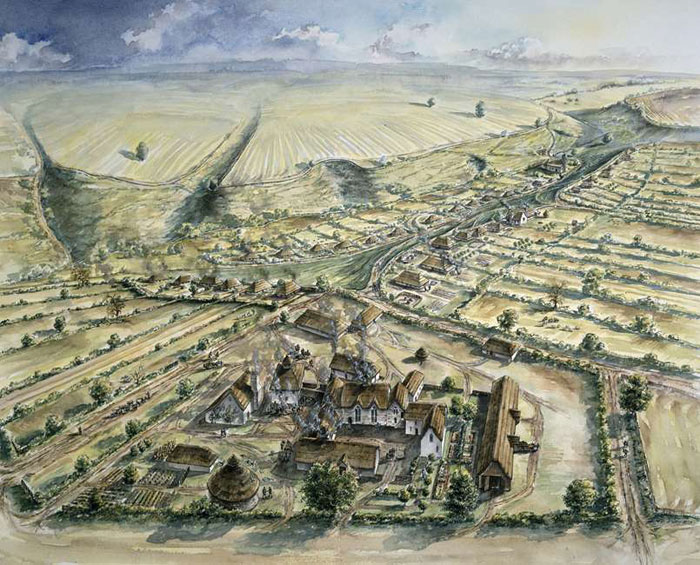 Artist's impression of Wharram Percy in the late 12th century. Credit: Peter Dunn/Historic England
Artist's impression of Wharram Percy in the late 12th century. Credit: Peter Dunn/Historic England
In the absence of other explanations, the team concludes that while the cannibalism scenario is a possibility, they think it's most likely that the markings and mutilations were some sort of ritual process to prevent the corpses from rising.
"The idea that the Wharram Percy bones are the remains of corpses burnt and dismembered to stop them walking from their graves seems to fit the evidence best," says Mays.
The team acknowledges that the revenant explanation is just an hypothesis at this point, but it's possible that future archaeological discoveries could help clear up the mystery, if we can find more evidence of this strange, disturbing ritual.
The findings are reported in the Journal of Archaeological Science: Reports.
